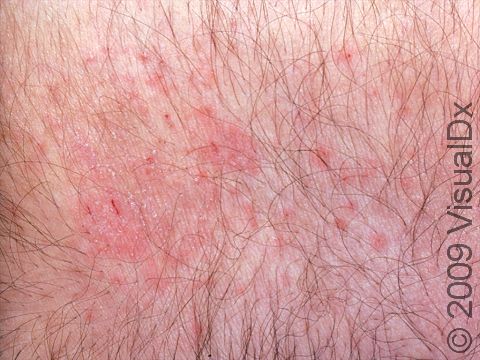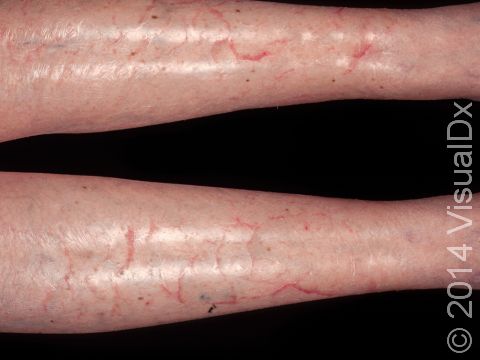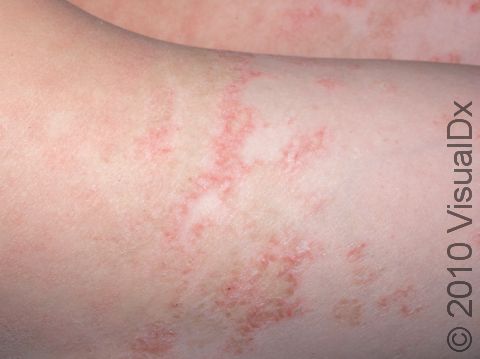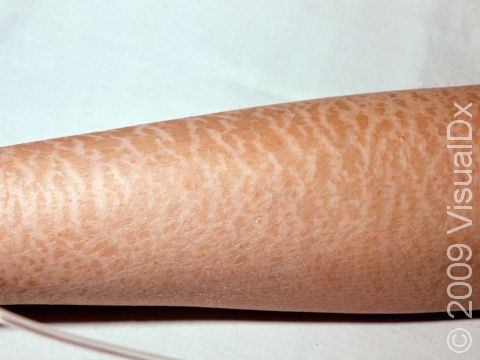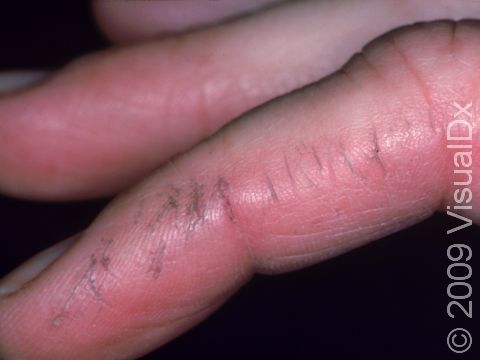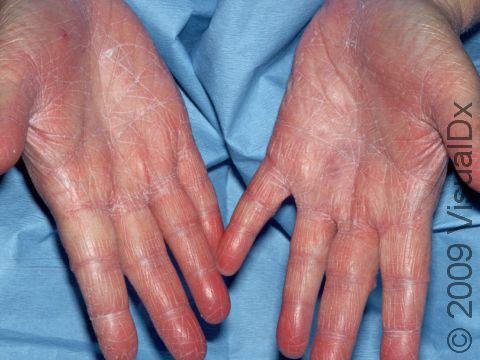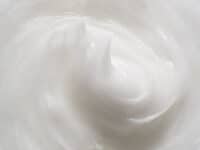
Dry Skin (Xerosis)
Dry skin (xerosis) is a condition of rough, dry skin with fine scaling of skin and, occasionally, with small cracks in the skin. Dry skin is also known as winter itch or asteatosis.
Often itchy, dry skin is caused by environmental factors, such as cold weather and frequent bathing, and by medical conditions, such as atopic dermatitis and malnutrition. Dry skin develops due to a decrease in the natural oils in the outer layer of skin, which makes the skin lose water.
Who's At Risk?
Dry skin can be seen in people of any age, of any race, and of either gender. However, the incidence of dry skin increases with age; nearly all individuals over the age of 60 have some degree of dry skin.
Dry skin is caused by a number of environmental factors including:
- Low humidity
- Frequent bathing
- Harsh soaps
Dry skin is caused by several medical conditions including:
- Ichthyosis
- Atopic dermatitis
- Diabetes
- Hypothyroidism
- Down syndrome
- Liver or kidney disease
- Malnutrition
- HIV/AIDS
- Lymphoma
Signs & Symptoms
The most common locations for dry skin include:
- Legs, especially the fronts of the lower legs (shins)
- Arms
- Trunk, especially the side areas between the bottom rib and the hip (flanks)
- Backs of the hands
Dry skin appears as dull, rough skin with fine scales that flake off easily. In more advanced stages of dry skin, the skin may have cracks that resemble a dry lake bed. Inflammation of the areas may lead to pink or red patches.
Dry skin can be completely without symptoms (asymptomatic), though more inflamed skin tends to be mildly to severely itchy.
Self-Care Guidelines
Healthy bathing habits can improve dry skin:
- Take a bath or shower only once daily. More frequent bathing can make the skin lose water (dehydrate).
- Use lukewarm (not hot) water.
- Limit bath time to 15 minutes.
- Avoid harsh deodorant soaps (or limit their use to armpits, groin, and feet).
- Use non-soap cleansers.
- Pat (don’t rub) the skin dry after bathing.
- Apply moisturizer immediately after bathing, while the skin is still moist.
- When choosing a moisturizer, look for oil-based creams and ointments, which work better than water-based lotions.
The following over-the-counter products may be helpful:
- Petrolatum or petroleum jelly (Vaseline®)
- Fragrance-free creams or ointments
- Preparations containing alpha-hydroxy acids such as glycolic acid or lactic acid
- Creams containing urea
- Over-the-counter cortisone cream (if the areas are itchy)
- Topical antibiotics applied immediately to any cracks in the skin to help prevent infection
Use a humidifier in the bedroom during the cold, dry seasons to help prevent dry skin.
Treatments
The physician may prescribe:
- Cream containing alpha- or beta-hydroxy acids (glycolic acid, lactic acid, salicylic acid)
- Urea-based cream
- Preparation containing high concentrations of propylene glycol
- Corticosteroid (cortisone) cream, if the skin is inflamed or very itchy
If the physician suspects that a medical condition is causing your dry skin, then he or she may do blood tests or other diagnostic procedures. The best treatment for dry skin caused by a medical problem is to treat the medical problem.
Visit Urgency
See your doctor for an evaluation if the above self-care measures do not cure your dry skin.
Trusted Links
References
Bolognia, Jean L., ed. Dermatology, pp.100, 218-219. New York: Mosby, 2003.
Freedberg, Irwin M., ed. Fitzpatrick’s Dermatology in General Medicine. 6th ed. pp.1393-1394, 1400. New York: McGraw-Hill, 2003.
Last modified on October 10th, 2022 at 4:36 pm

Not sure what to look for?
Try our new Rash and Skin Condition Finder
